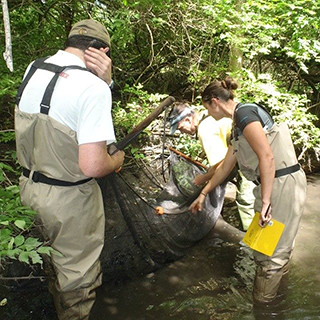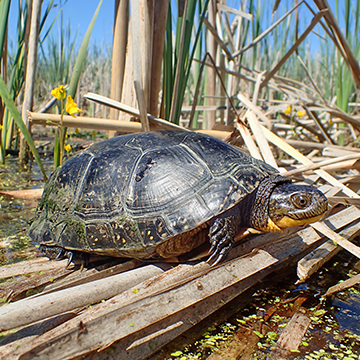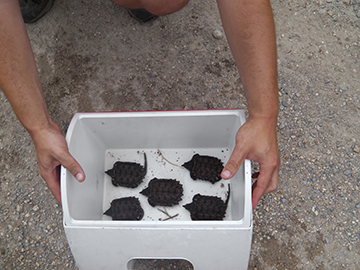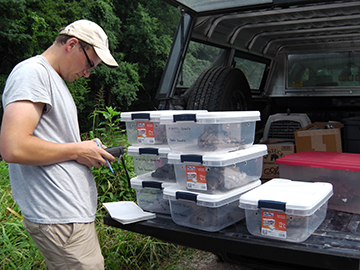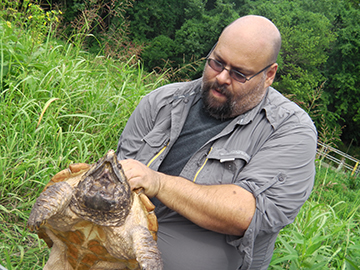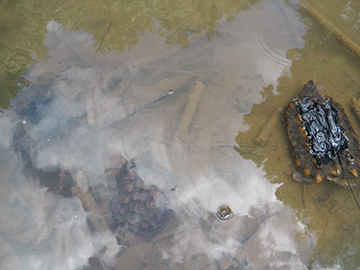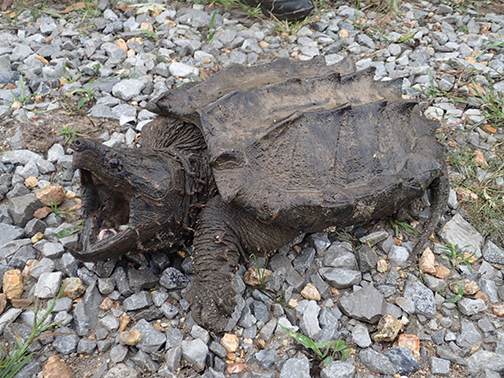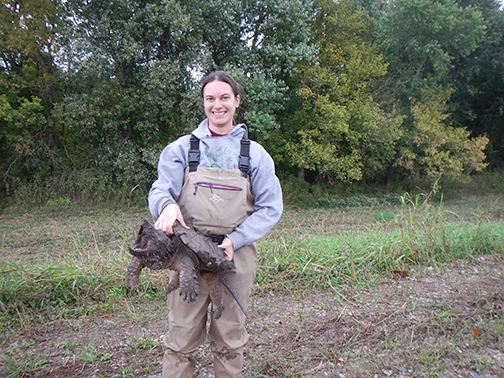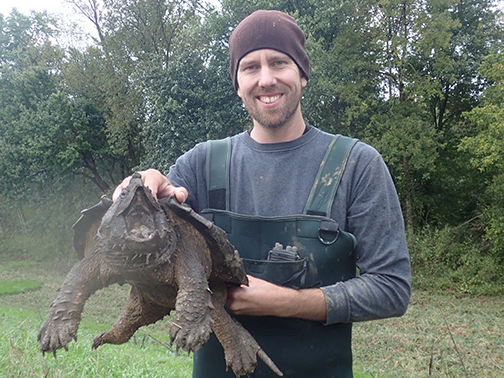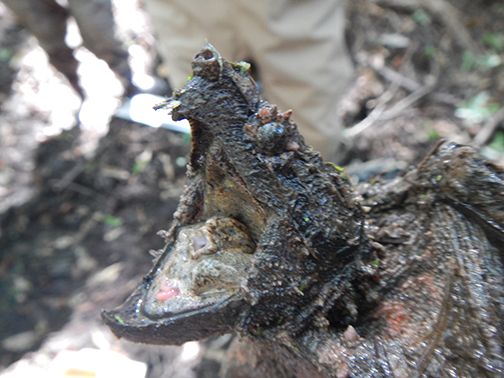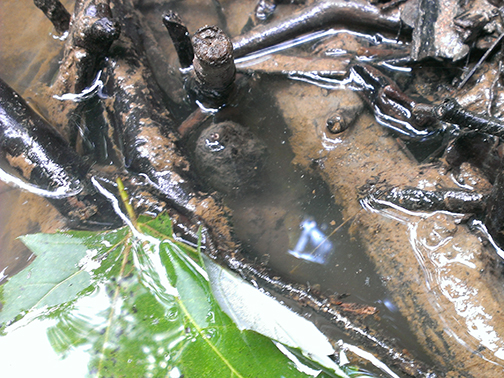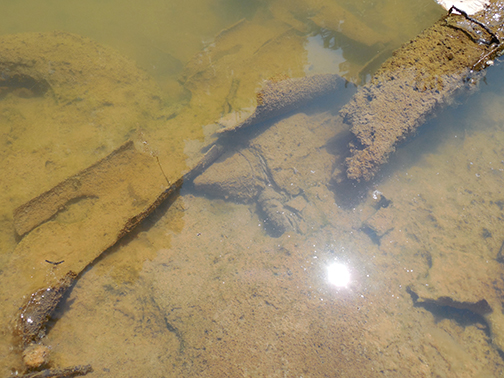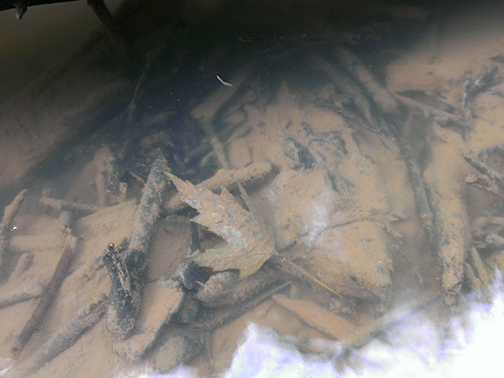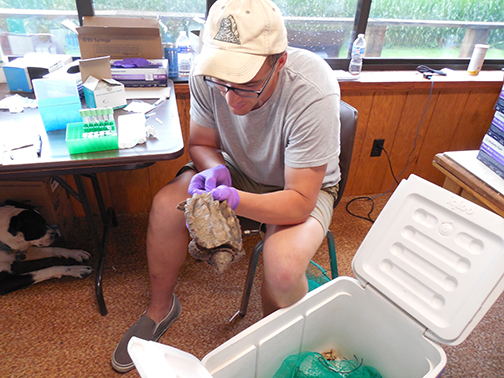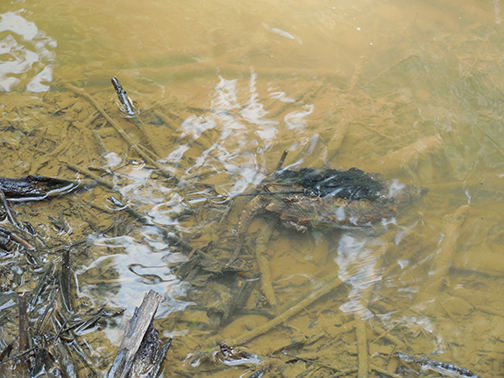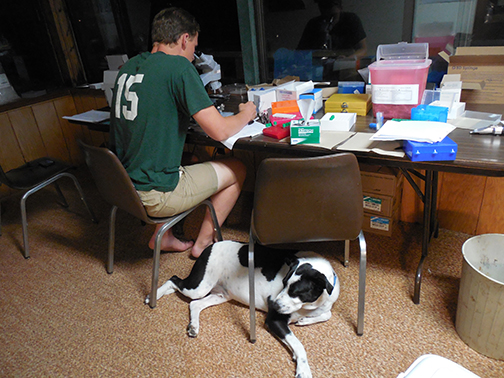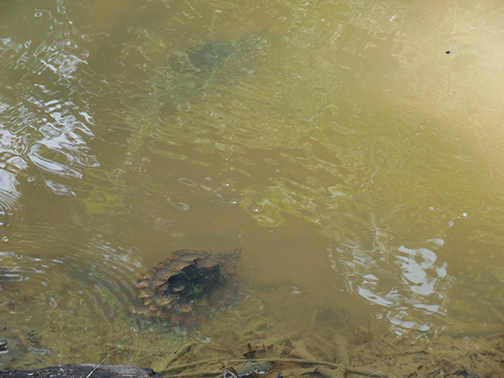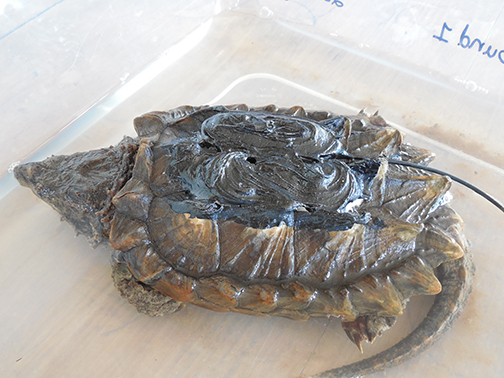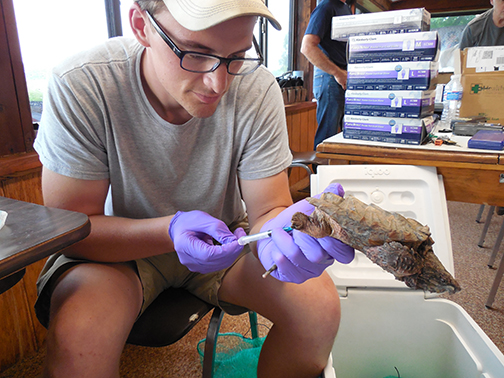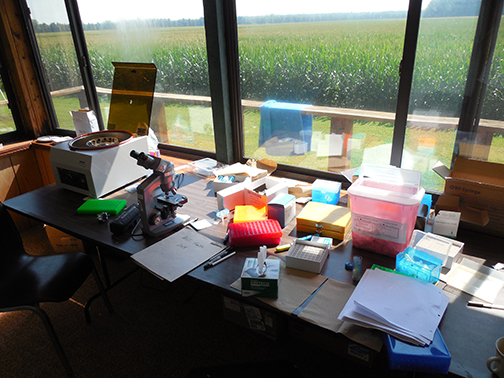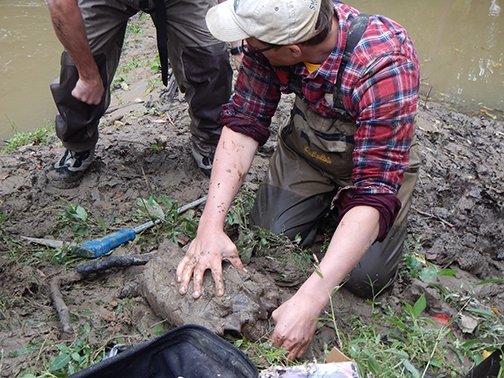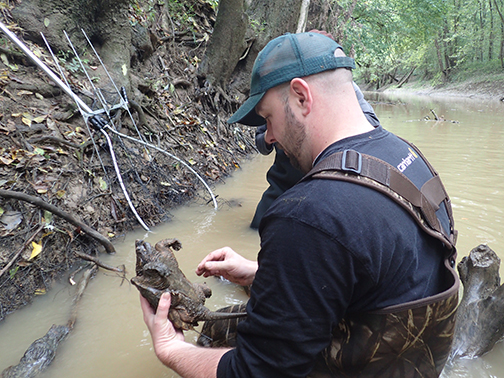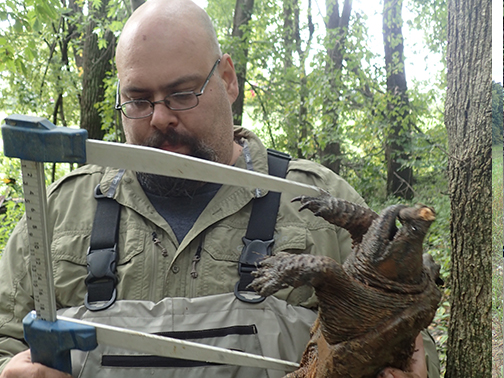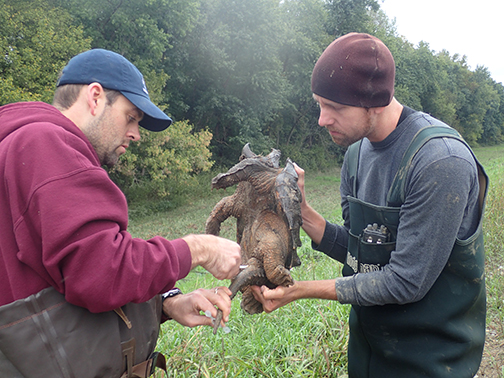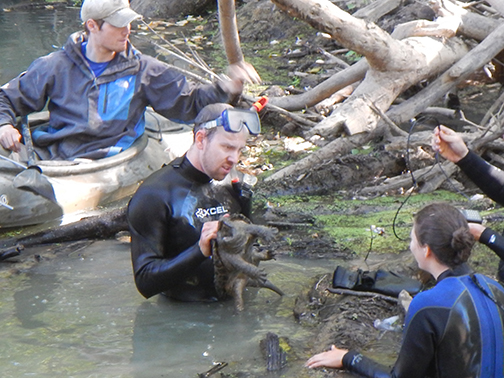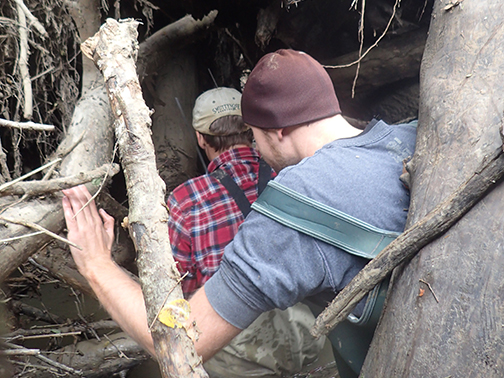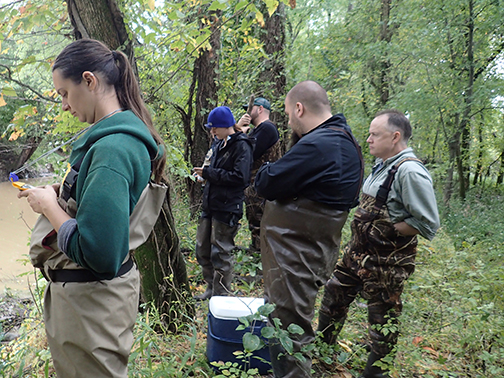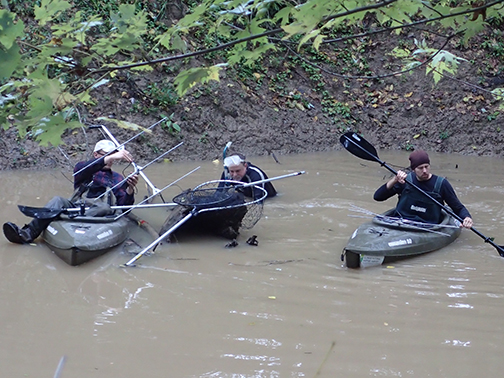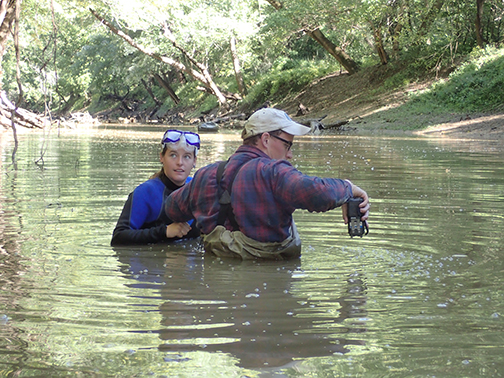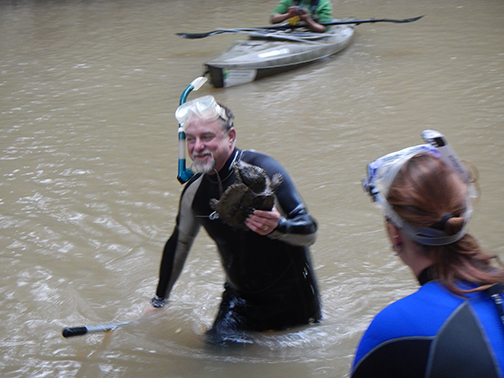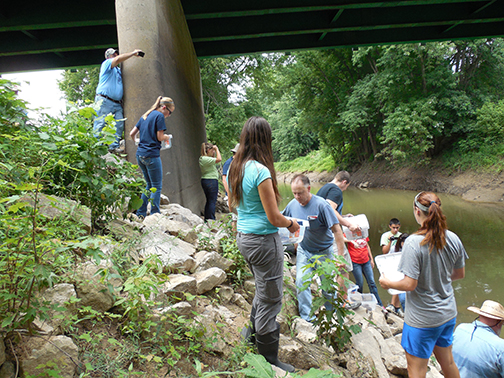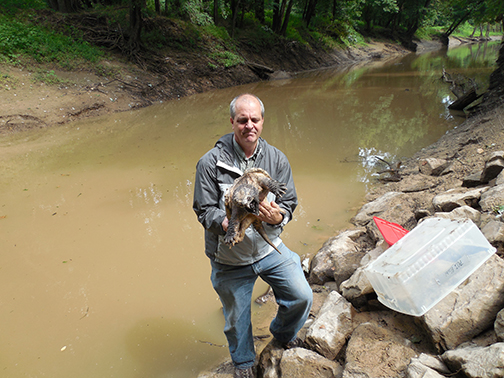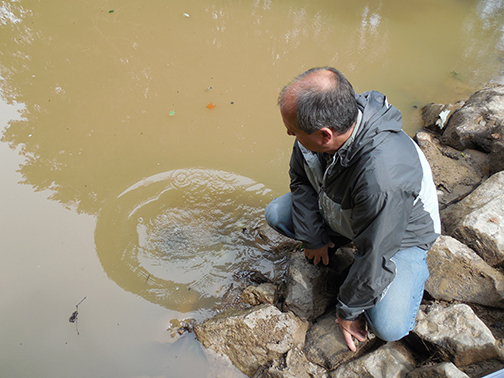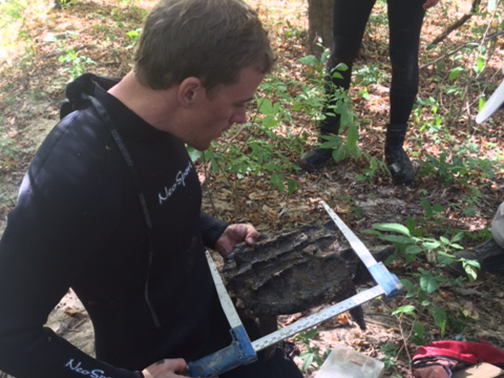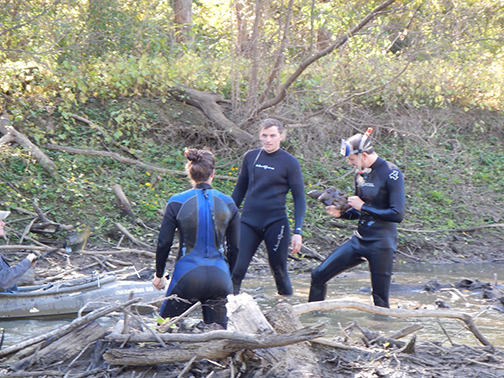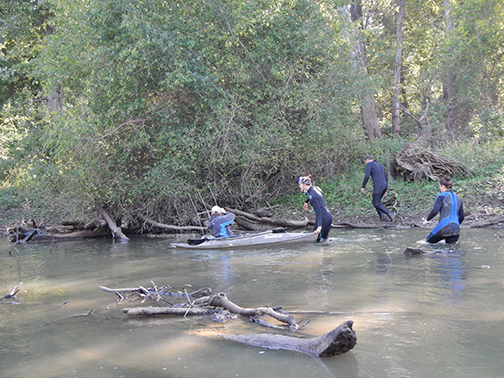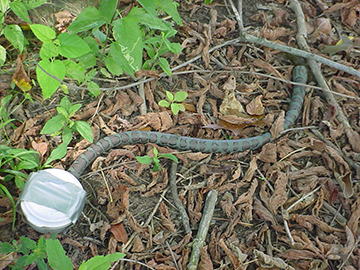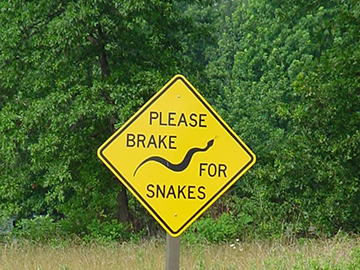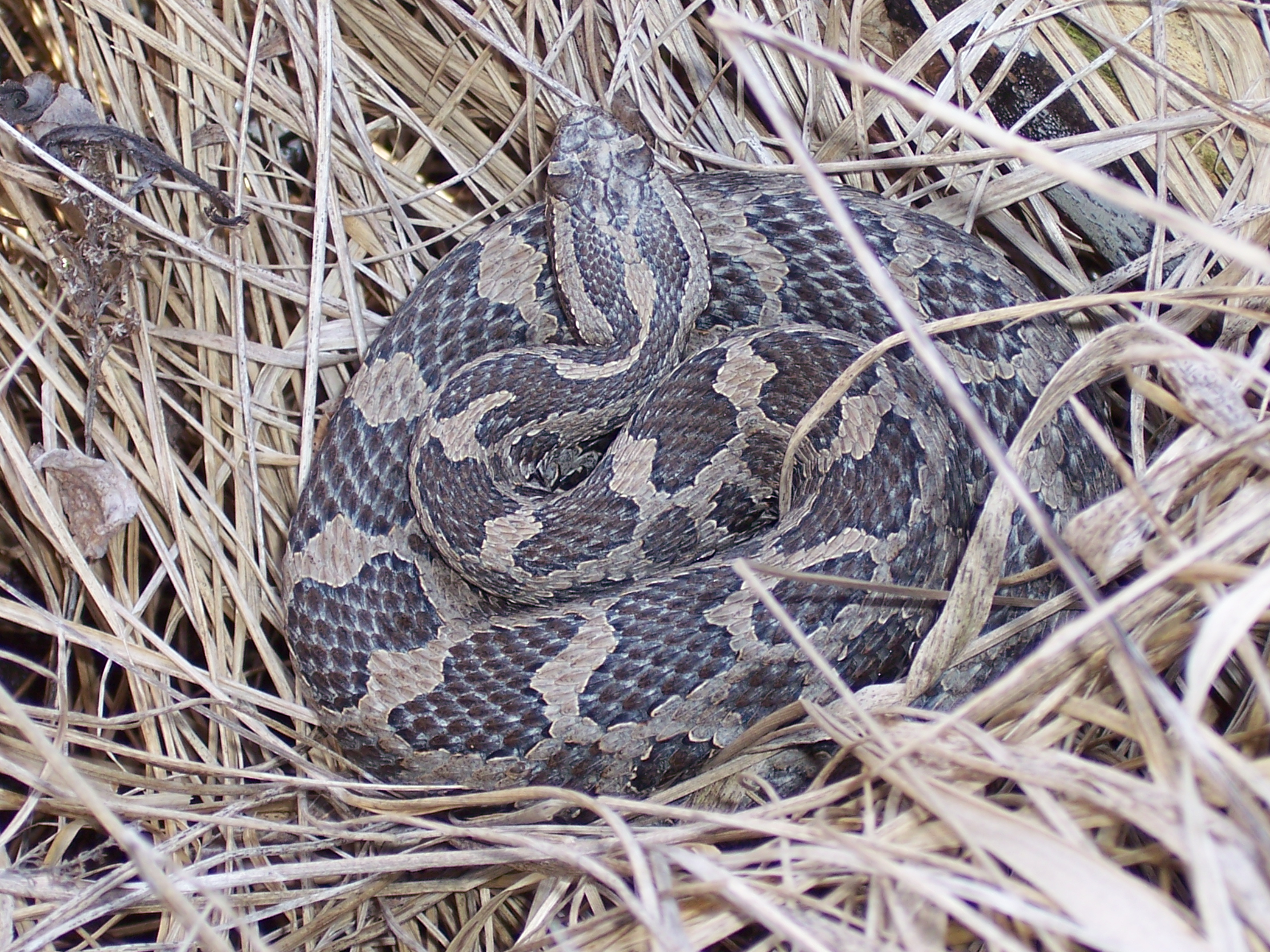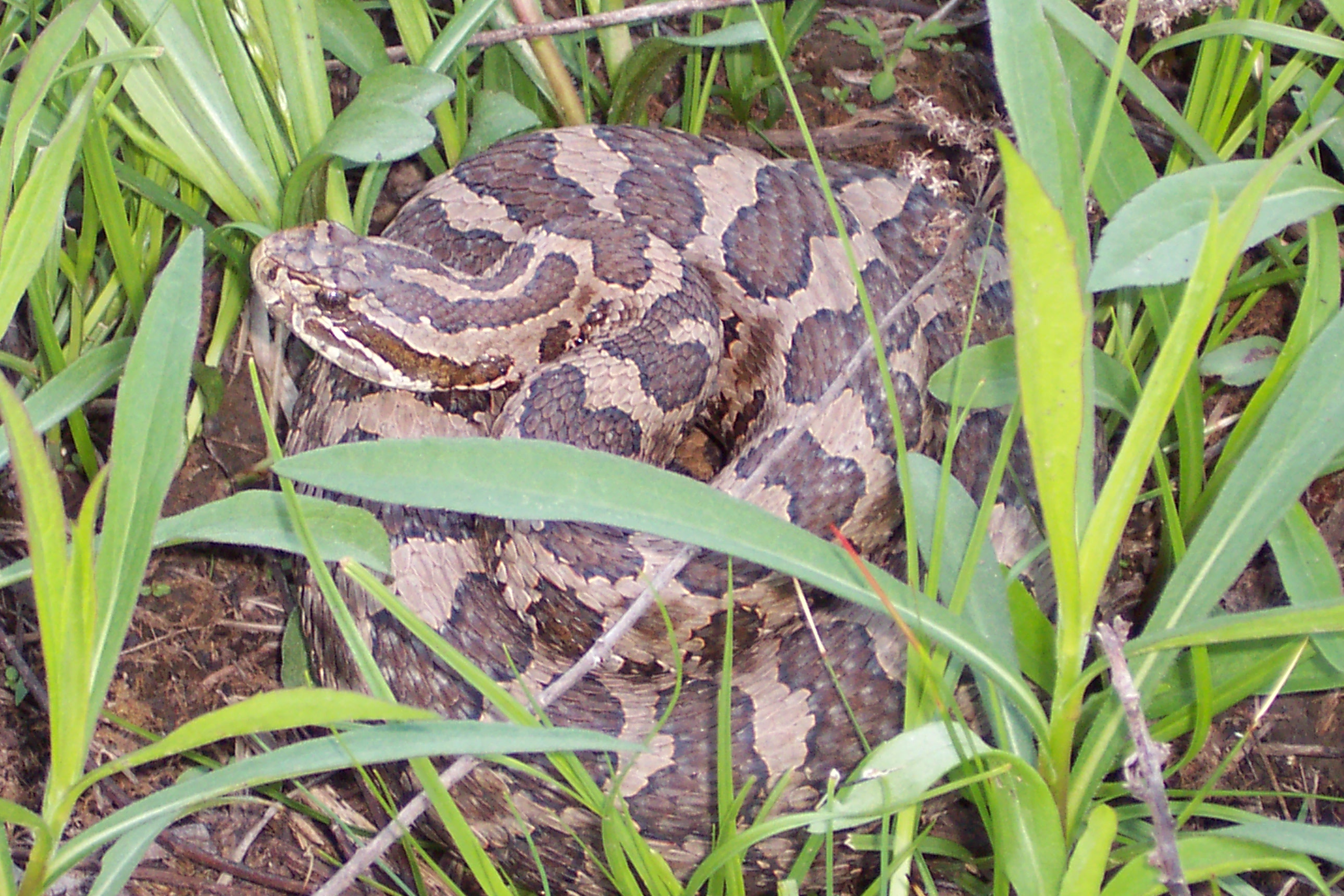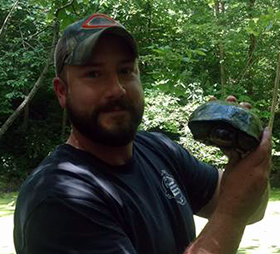In 1994, I began my research on the ecology of a relatively understudied species under the direction of Dr. Edward O. Moll at Eastern Illinois University. Although the work began as a simple single-species mark/recapture study, we greatly expanded it to examine the turtle assemblage. The site studied has impressive species richness for Illinois, nine species. I continued the work after completing my Master’s Degree and expanded it to include some limited radio-telemetry. Research continued intermittently until 2010 when I had to end the project. However, I may re-initiate the work on the species in the near future given the thousands of turtles marked at the site.
Author: Michael J. Dreslik
Conservation of the Blanding’s Turtle (Emydoidea blandingii)
The Blanding’s Turtle work I conduct can best be described as a larger project working toward the recovery of the species in Illinois. Overall, the work is multi-agency and has numerous collaborators. With that, I am a member of the Illinois Department of Natural Resources Blanding’s Turtle Recovery Team. Thus, I do also have a role in larger conservation issues the species faces. The fieldwork I have conducted in the past was mainly in the Chicago Region working on various field projects with multiple county-level forest preserve districts.
Reintroduction of the Alligator Snapping Turtle (Macrochelys teminckii)
The work on the Alligator Snapping Turtle began with the Illinois Department of Natural Resources wanting to re-establish the species in Illinois. After serving on a recovery team to create a work plan we performed two pilot releases, in a lentic and lotic system. After the successful survival of head-started turtles in a lotic system, the recovery team was reconvened and expanded. Using a PVA guided release strategy, in 2014 releases of radio-equipped turtles began in Illinois, Oklahoma, and Louisiana in a cooperative effort funded by a multi-state competitive State Wildlife Initiative Grant. Ethan Kessler is leading the project for his doctoral dissertation. The major collaborators on this project are Dr. John L Carr and Dr. Day B. Ligon. The project is a large-scale collaborative effort.
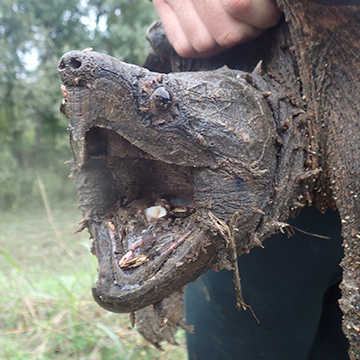
Conservation of the Massasauga (Sistrurus catenatus)
Since 1999 research on the Eastern Massasauga in Illinois is ongoing, we demographically monitor a focal population annually. The broad scope of the project is to conserve and recover the species. The research has or is being addressed is interdisciplinary and covers spatial ecology, energetics, genetics, thermal ecology, demographics, and viability. Thus, the research has covered many aspects of the species’ ecology from spatial to physiological. It has been a fully collaborative efforts with researchers at the INHS, to specialists at other institutions. The major collaborators on this project are Dr. Christopher Phillips, Dr. Sarah Baker, and Dr. Matthew Allender.
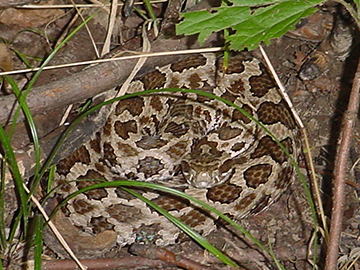
Urban Biotic Assessment Program
The Urban Biotic Assessment Program is a group of taxa-specialists that conduct assessments of flora and fauna primarily associated with Illinois State Toll Highway Authority construction efforts. The group focuses on assessing the potential impacts of construction activities on biota, monitors wetland mitigation sites, and provides a source of data and information useful in conserving and managing the biota of the Chicago Region. The group works closely with the ISTHA in providing minimization, mitigation, and avoidance measures if impacts are present.
